A couple days ago RF posted a “Pro Tip” from Ammoland on measuring shot group size. I’m not a pro, but I took exception to some of the assertions in that write-up. After I did a little whining in the comments it was suggested that maybe this actually warranted a follow-up post. So… here she is. What was inaccurate in that Pro Tip piece and how can you measure your groups more easily, precisely, and quickly? Well first . . .
A Quick Primer:
Why measure center-to-center? Well, what we’re looking for is the largest spread between the precise points where the bullets impacted. We don’t want to count the diameter of the holes in that measurement, just the very center point of the holes. For instance, if you line up at 100 yards with your .50 BMG and you shoot 5 rounds precisely through the exact same hole, you have no spread. But, were you to measure edge-to-edge it would suggest you’re shooting 1/2 MOA (a half inch spread at 100 yards).
Inaccuracies:
First and foremost, caliber designation cannot be used to determine bullet diameter as suggested in the Pro Tip:
In metric cartridges — actually, pretty much just non-U.S. calibers — the name is supposed to be the bore diameter of the barrel, not the diameter of the bullet. The bore diameter is the distance between the rifling lands, whereas the bullet diameter is typically the larger distance between the rifling grooves. For instance, 7.62×39 and 7.62x54R are actually a 7.92mm diameter projectile. .303 British (“standard/imperial” measurement but non-U.S. caliber) is a 0.311 inch bullet. 5.56×45 is actually a 5.7mm projectile. 10mm Auto is 10.17mm. 7.62×51 is 7.82mm. This confusion also came up in the 7N6 import ban thread, where folks said 5.45×39 should be exempt because it’s smaller than .22 caliber. Well, not really. Converting 5.45mm to inches doesn’t work, because the projectile is actually 5.60mm in diameter (0.22″). Now there are exceptions where the metric designation is actually the bullet diameter. 5.7×28, for example. 9×19 is close enough to call it rounded from 9.017. However, the exceptions are rare in this case. Much rarer than in standard calibers:
In standard calibers or, shall we say, U.S.-developed cartridges, the caliber designation is often the diameter of the bullet but could be based on chamber dimensions or could just be rounded at the whim of whoever developed the cartridge. Basically, you just can’t assume here. If you want to know the diameter of the bullet you’re shooting, you need to look it up. .357 is 0.357″, .308 is 0.308″. .44 special/magnum is 0.429″. .38 is 0.357″. .223 is actually 0.224″ and .22 LR is actually 0.223″. .380 is 0.355″. .300 BLK is 0.308″.
Second, much of the time none of this really matters at all anyway. The Pro Tip suggests subtracting the diameter of your projectile from the outside edges of the farthest apart bullet holes. Well who said the holes in the paper are actually the same as your bullet diameter? This is very often absolutely not the case. For instance, this photo (and the lead photo) is a 3-shot group I just shot with 147 grain 9mm FMJ:
Those holes are far from 9mm (or 9.017mm) in diameter! Naturally, today is the day I find my caliper dead and no spare button cells in sight, but these holes are actually coming in at about 4.3 to 4.5mm. If I measured from the left edge of one hole to the right edge of another hole and then subtracted 9mm from the total, I would come up with a group size that’s smaller than reality. If you want to measure hole outside edge to hole outside edge and subtract, you need to subtract the hole size not the bullet size. In the event that you should be so awesome as to shoot a group that is a single, ragged hole and you cannot tell how big an individual hole is, then “miss” on purpose somewhere else on the target and measure that for your hole diameter.
Alternative Measuring Methods:
If you don’t have a single-hole group, you can cut out all of the hole/bullet size estimation and the ensuing math by simply measuring from the inside edge of one hole to the outside edge of the other (using the two farthest-apart holes). This gets you exactly the same distance as center-to-center (which is the goal) and, assuming your math is correct, the exact same distance as outside edge to outside edge followed by subtracting “bullet diameter” from that result. The Pro Tip should really recommend this as the easiest, most preferable method in the vast majority of cases. At least when you have clean holes with clear edges. Like these “holes”:
As you can see in the pic above vs. the pic below, I can simply move the caliper over to line up in the centers of the holes also. If you’re dead-on centers and dead-on inside/outside edges, the measurement is identical.
Depending on target type, bullet type, and other variables you do not always get clean holes in the target, though. Case in point: my 9mm golf group pictured here. You’re already going to do a lot of estimating just picking the “edges” of the holes. So… my personal, non-pro “advice”: just measure center-to-center as best you can. In some cases eyeballing the center of the hole is every single bit as easy and accurate as trying to figure out where the edge actually is. Unless you’re shooting in a competition or something, getting to the closest like 1/16″ is plenty granular enough for load development or internet bragging or sighting in an optic or whatever you might be up to. On that thread, I don’t use a caliper when I’m out shooting. There’s a small tape measure in my range bag.
The exception to measuring inside edge of one hole to outside edge of another, or just going for center-to-center, is when your group is a single hole of any shape. One flyer and you can almost always go from the inside edge of that one to the outside edge of the ragged hole comprised by the rest of the shots. But if it’s truly a blob, then the Pro Tip applies. You have to measure outside to outside and then subtract… hole diameter, not bullet diameter. Assuming they’re different, which, again, you can figure out by shooting a single hole somewhere else on the target.
But you darn sure can’t figure out hole diameter by simply knowing the name of the caliber you’re shooting.
Oh yeah… the golf game target is from GunFun. Lots of games targets and other good stuff to be found there.

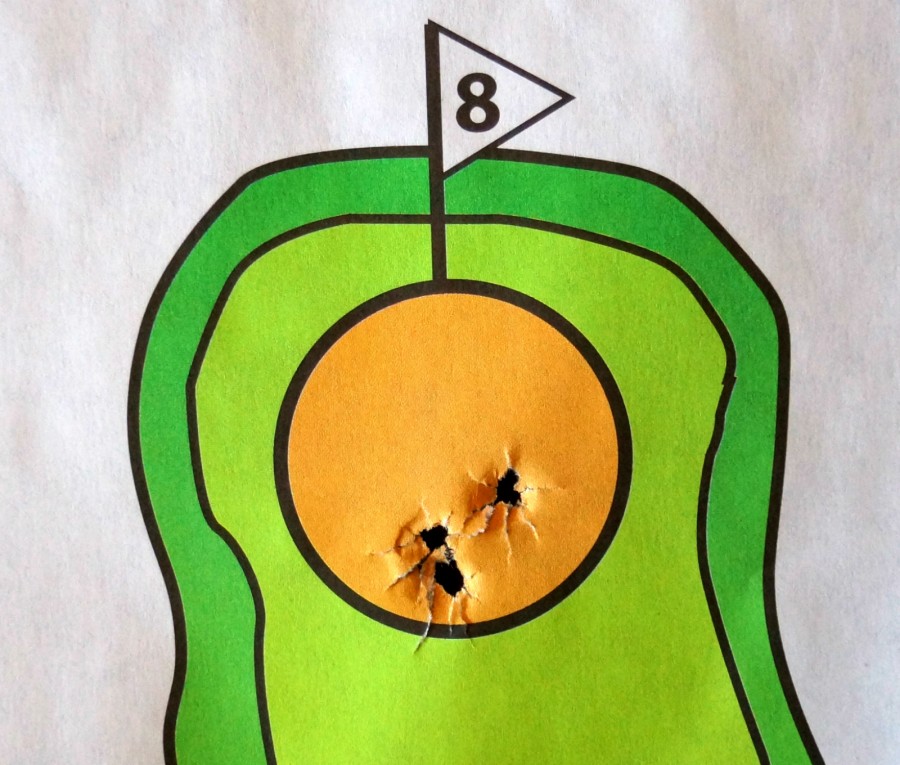
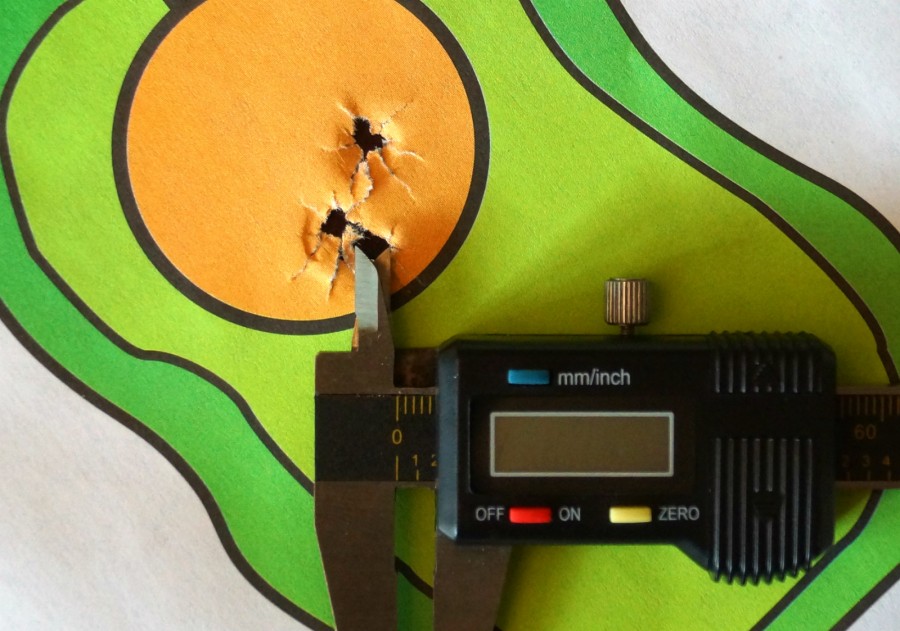
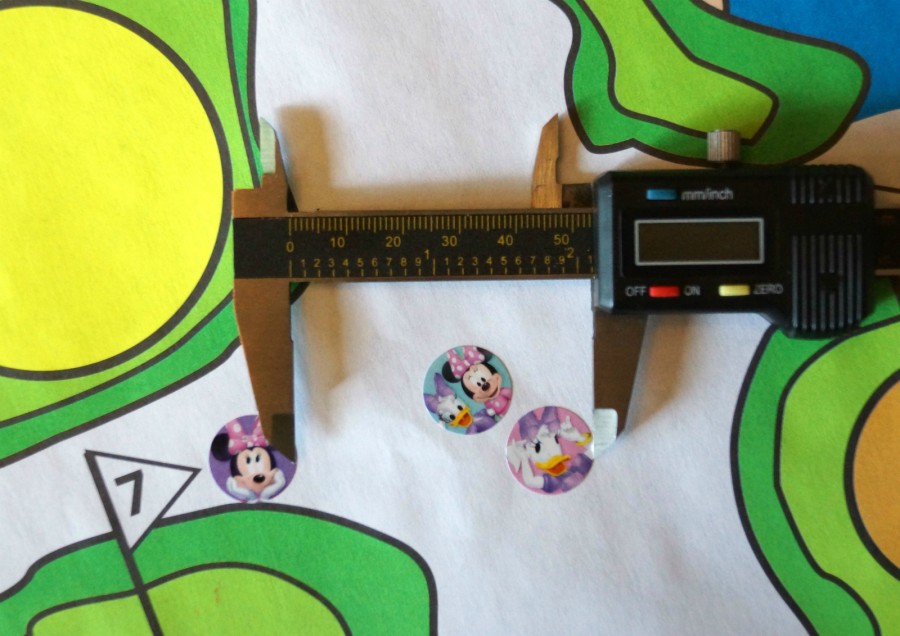
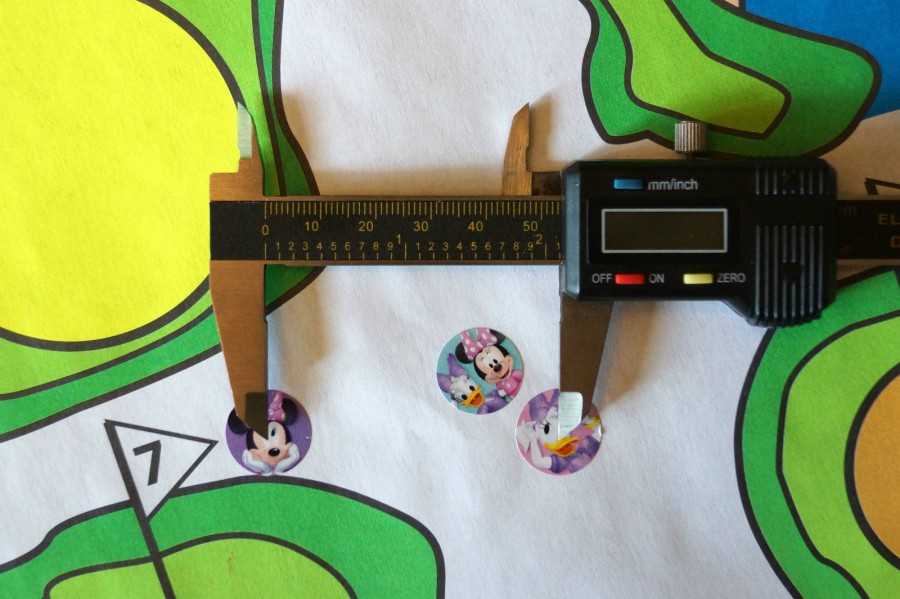
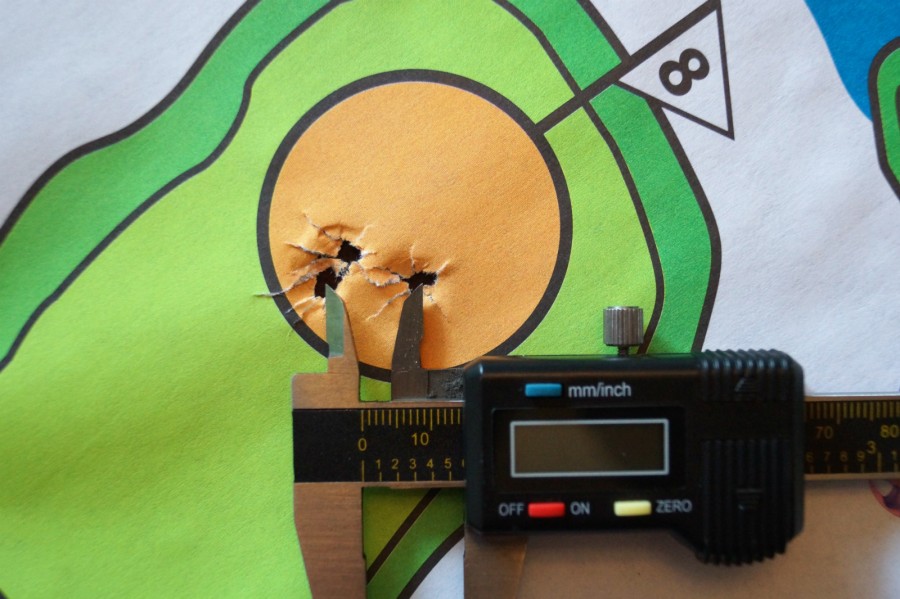
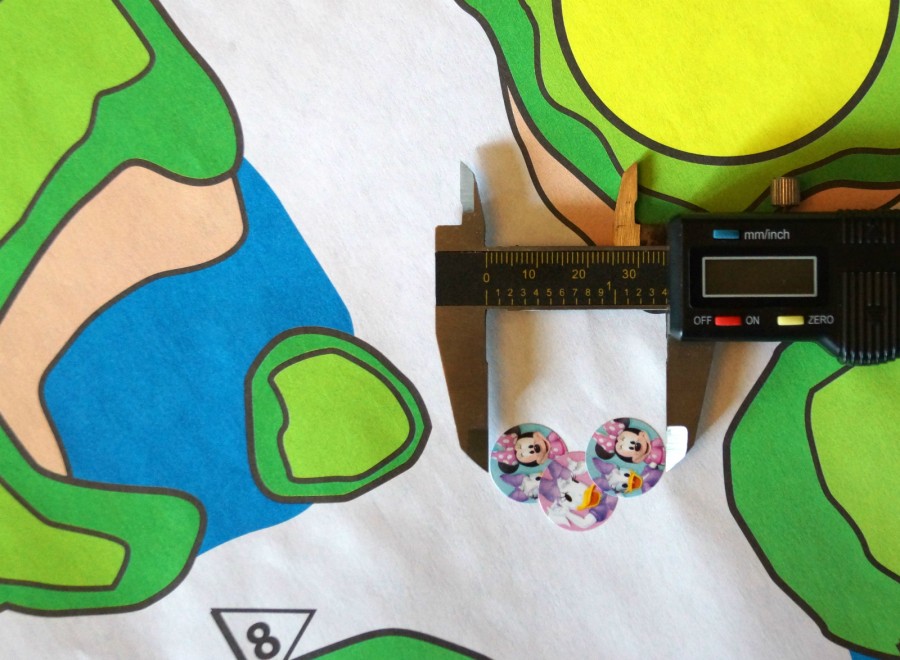
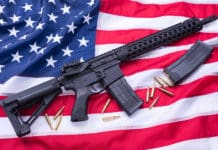


Good article. Love the targets!
I’ve had a lot of fun with the golf ones (each player gets their own target and each hole has a par, etc) and the battle ship ones over the past few years. Also picked up a ton of the IPSC targets and sight-in targets.
+1. Thank you. Did not know about the bullet diameters either, and get the point about measuring with more precision. Another example of why I read TTAG.
When I get good enough to BE more accurate, I will need this level of accuracy in measuring, to log results and fine tune more.
If there’s anything I’m good at, it’s pedantic banal palaver!
Just so long as you abstain from obfuscating…
Face palm…..
If I had to agonize over details like this, I would just stop shooting.
This is sort of a “here’s all the info I can think of” post. Now you can pick and choose what you care about. When I’m actually out shooting (as mentioned in the write-up) I just use a small tape measure and I usually go center-to-center unless holes are particularly clean and then I’ll do inside edge to outside edge. And round to the nearest 1/16″ since the tape is marked for that.
Measuring Grouping Size: Splitting Hairs Edition
I wish my groups were tight enough to do that! I’m no KJW haha
I’m loving the “cards” gunfun target (http://www.gunfun.com/shop/cards-11070/), I think I will order some.
Seems like some great range time can be had with a shooting partner and a deck of cards.
“A couple days ago RF posted a “Pro Tip” from Ammoland on measuring shot group size. I’m not a pro…”
Neither is RF. He didn’t even own a gun until he started TTAG about five years ago.
Kevin, he didn’t write the article. As mentioned pretty darn clearly in the sentence you quoted there, AmmoLand wrote it. RF just posted it.
yep i think this is way too deep in the weeds unless you are in competition with a bunch of good shooters who are winning by thousands of an inch
just give me a center of mass group all the time and I am happy
I’d kinda doubt that thousandths of an inch is within the sig figs. Just identifying the bounds of the holes is an estimation. To do better and differentiate between shooters of similar skill level, one should probably increase the distance to the targets. This is for fun and probably not really applicable for railgun benchrest type shoots against a target and moving piano roll. So, half the fun is arguing over the measurements themselves.
“Naturally, today is the day I find my caliper dead and no spare button cells in sight, but these holes are actually coming in at about 4.3 to 4.5mm” – the best advertisement for analog I’ve seen.
Naw, the easy way to reduce group size get closer to the target… like really close. The idea of one ragged hole is stupid. If you managed to shoot someone thru and thru three times in the same spot you just wasted two rounds. Ya gotta spread the lead to be effective.
Everyone should be a little suspicious about how men make measurements.
Admittedly I used to use my penis for comparatively measuring group size, but every time I did that I happened to be shooting really poorly. Same thing when measuring against any fish I caught.
Ha!
This is why we call our range finders, “argument enders”.
How far is that rock? Oh BS! It is not, yes it is…..
It’s always entertaining when non-scientists put on their little white lab coats, run experiments, measure results, compile data and invariably jump to false conclusions.
Here’s something for you measurebators to try: Agree on a method of measuring a shot group (center-to-center, outside-to-outside, whatever), then have six different people use the same calipers to measure the same group (multiply it over more groups if you want more data). Don’t share data until you’re all done.
Now compare notes. Heck, throw it all in a spreadsheet if you want. Here’s the spoiler: The standard deviation will be at least 0.050″ among different measurements of the same shot group. No matter how precise your instrument, or how anal you are about proper procedures, you’re still measuring irregular holes in ripped-up paper.
The process outlined above is a critical part of scientific method. In order to determine if a statistical difference is significant, you must first prove the accuracy of your measurements.
And once you have gone through this process you may be inclined to leave the calipers on your reloading bench where they belong, ditch the bullet diameter reference tables, grab yourself a ruler and call it a day.
Agreed. That’s why my basic piece of advise is eyeball center-to-center and measure it. I have a small tape measure in my range bag and that’s what I use when actually out shooting.
FYI — for all you know I am a scientist. TTAG is not my occupation. Either way, I did stay in a Holiday Inn Express once.
Most groups I’ve seen don’t require much scrutiny. A yard stick would suffice. However, for some one shooting a precision rifle, closer examination is required. Unless your shooting in a match where thousands count, a simple ruler or tape measure will get you in the ball park. You should be able to judge your group size to within 1/32 or so.
Curtis, I am pretty sure there is no such word as “measurebator”. You may have been thinking of my uncle who also lived in Illinois and worked at a well stocked fishing lake. He was hired to bait hooks for the customers who needed the help. Eventually he became a Master Baiter. OK, if you groan, at least don’t repeat it.
…you know what, I think I’m gonna stick to “smaller than my palm? Good enough.” At least for pistol shooting.
But some of those targets look like a ton of fun. I think I’m gonna order some.
First thing I thought of on the initial article.
Why the hell are they making it so complicated?
Either center to center or one edge of one and the other edge of the other hole makes it way simpler. Without any screwed up math.
IMHO, this method or the previous method does not matter as long as you are consistent. The difference is minor.
I enjoyed reading both, but I am sticking to my original recommendation
OnTarget Software
http://www.ontargetshooting.com/index.html
Last Saturday during warm-up for a competition this weekend we used the software above and calipers and other tools. The Judges gave their official marks and the software only had +/- .006 difference. The point of the exercise is to see if we can just use the software for at least unofficial or club matches.
At $12, it is as cheap as many calipers and runs on most any ultrabook.
+1. There is also a free version. It’s simple to use.
Step 1 – Go to range, bring cell phone and 6″ ruler.
Step 2 – Shoot.
Step 3 – Hold ruler against target, take picture, email to self.
Done.
Is that called a “selfie”
You forgot to mention bringing a gun, ammo, targets, and a staple gun. My range bag includes a staple gun and a package of cheap paper plates. I draw a circle at the center of the paper plate, staple it up, walk off the range distance, and shoot. Cheap is what you get when dealing with someone who grew up in a place described by the census bureau as “in the first percentile for average family income”. On the other hand my parents didn’t own a key to their house. They lived there for forty years and never had an intrusion. People insist that poverty causes crime but I think they have it backwards. Crime causes poverty.
+1
If its for the money. Use software, calipers, or as some matches I have been to use caliber specific hole finders. For the guy who is most interested in his groups, he would know the actual caliber of this firearm be it .308 or .311.
One other item that has served me well is to lay the target flat on a hard clean surface to press the holes back into their actual round shape so as to define the actual cut hole. I have had plenty of misleading groups because the backing raggeded the hole as it smacked the target paper after the shot.
I know everyone is cheap but the best groups are logged on heavy stock paper or card stock. Heavy paper records the groups better. At least have a good backing on the light paper that is able to keep the target paper from ripping to shreds.
My 5 shot group is 2 MOA after I ignore that flier and that other flier…what is that over there? Oh, another flier. Yep, 2 MOA
You could get that group size even smaller if you also ignored the 4th shot you got off accidentally, while the good looking blond on the next bench was adjusting her bra.
Mighty fine and logical and easy to understand article. Kudos!
My approach to measuring group size has always been to invite a skeptical friend to accompany me to the range. I shoot a group and – regardless of size – say, “See! A one inch group!” He says bullshit and pulls out his tools to prove me wrong. I then graciously accept his judgment and record the result in my little range book.
Have I been doing this wrong all these years?
Nice article. Very rare to find new (to me) real info, clearly explained.
I don’t shoot paper. I shoot pumpkins filled with water. I guess I’ve deprived myself of measuring (the enjoyment)
That makes your gun either 1 POA (“Pumpkin of Angle”) or 1 MOP (“Minute of Pumpkin”).
If I had to core out a dozen pumpkins every time I wanted to pop off some rounds, I’d never go shooting! I’ll stick to paper I think. LOL!
I was already loving this article for getting into The Truth About Bullet Diameter. The pasters put it over the top. Must have.
This comment stream turned hilarious!
Most important thing: don’t use more significant digits to describe group size than you can reliably measure. If you’re shooting a .308 (bullet diam = 0.308) and the individual holes on your paper vary from .305 to .275 if measured in four axies (vertical, horizontal, 45 degrees each way), you have at least .03 slop in the holes. I have seen .223 measure from .15 to .32 inch holes in some axis.
Second most important thing: Use targets that give consistent clean holes for this work. Half or more don’t. The old old thick NRA targets were marvelous.
Keep the comments and zingers comin’. The popcorn is ready!
Non pro tip.. If your not shooting long range 1k for example or past .7k for that matter I’m not going to be able to compensate for the difference between built size and hole size given all the other variables. Strictly speaking of my self here.
When I started reloading and learning the proper way I thought to measure group sizes. I was corrected by a guy who had this stuff down the right way. Center-to-center or edge-to-edge, you will come up with same numbers, so for twenty-five years I measured center-to-center.
All this fuss and bother (and fun wise-cracks) and not a single mention of the most reliable trick IMO: calipers with clear plastic attachments and perfect circles. Zero the calipers when the circles are perfectly centered, then open ’em up until centered in the two most distant hole fragments of your big hole group.
Do the math comparing that with your outside edges measurements and then you will know if your .308 bullets make .270 holes in THAT target stock.
AND to find those hole edges for measurement, look for the bullet “scrub marks” on the paper. Less of a problem for high velocity than for typical handguns.
Comments are closed.